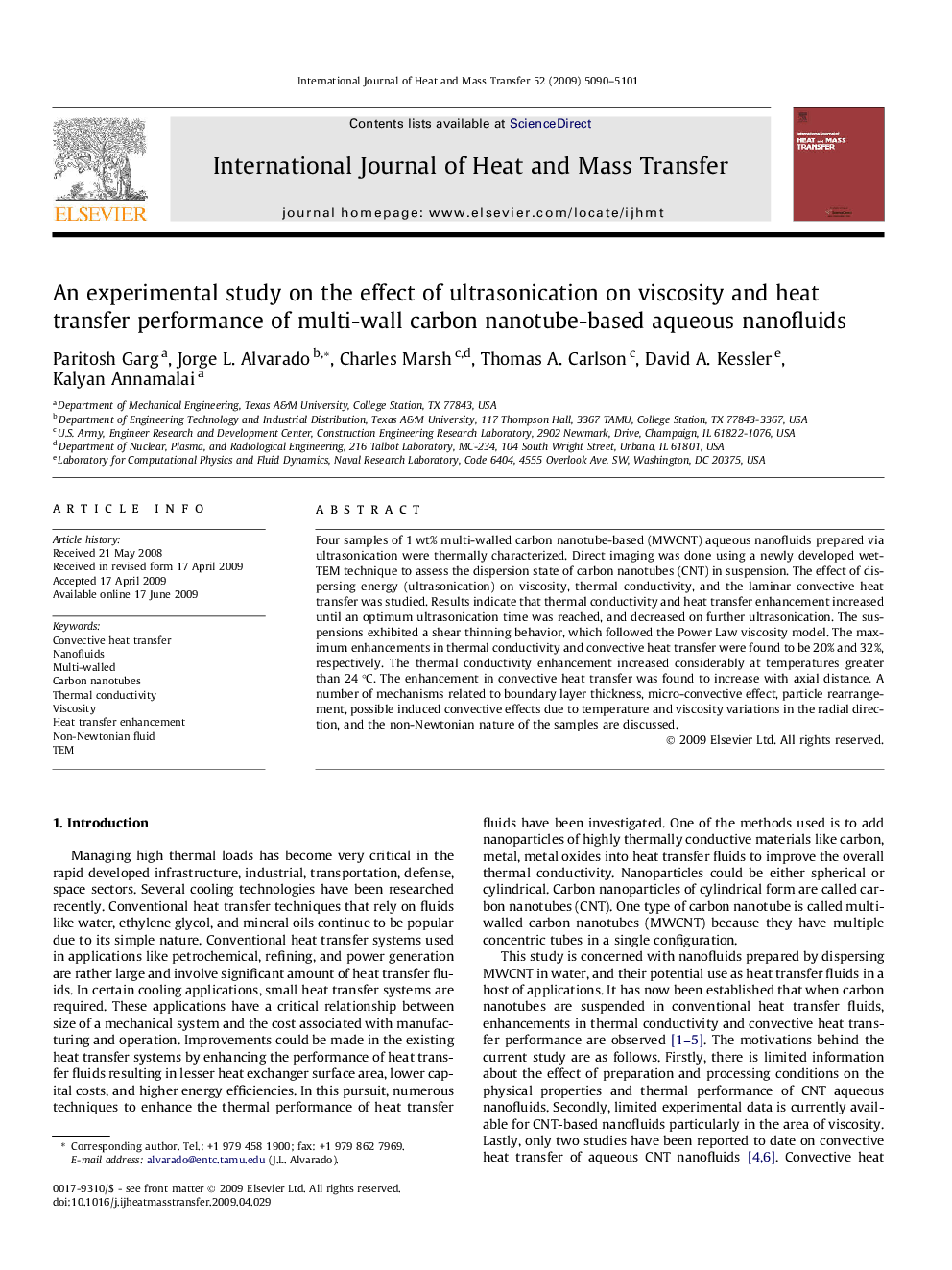| Article ID | Journal | Published Year | Pages | File Type |
|---|---|---|---|---|
| 661430 | International Journal of Heat and Mass Transfer | 2009 | 12 Pages |
Four samples of 1 wt% multi-walled carbon nanotube-based (MWCNT) aqueous nanofluids prepared via ultrasonication were thermally characterized. Direct imaging was done using a newly developed wet-TEM technique to assess the dispersion state of carbon nanotubes (CNT) in suspension. The effect of dispersing energy (ultrasonication) on viscosity, thermal conductivity, and the laminar convective heat transfer was studied. Results indicate that thermal conductivity and heat transfer enhancement increased until an optimum ultrasonication time was reached, and decreased on further ultrasonication. The suspensions exhibited a shear thinning behavior, which followed the Power Law viscosity model. The maximum enhancements in thermal conductivity and convective heat transfer were found to be 20% and 32%, respectively. The thermal conductivity enhancement increased considerably at temperatures greater than 24 °C. The enhancement in convective heat transfer was found to increase with axial distance. A number of mechanisms related to boundary layer thickness, micro-convective effect, particle rearrangement, possible induced convective effects due to temperature and viscosity variations in the radial direction, and the non-Newtonian nature of the samples are discussed.
